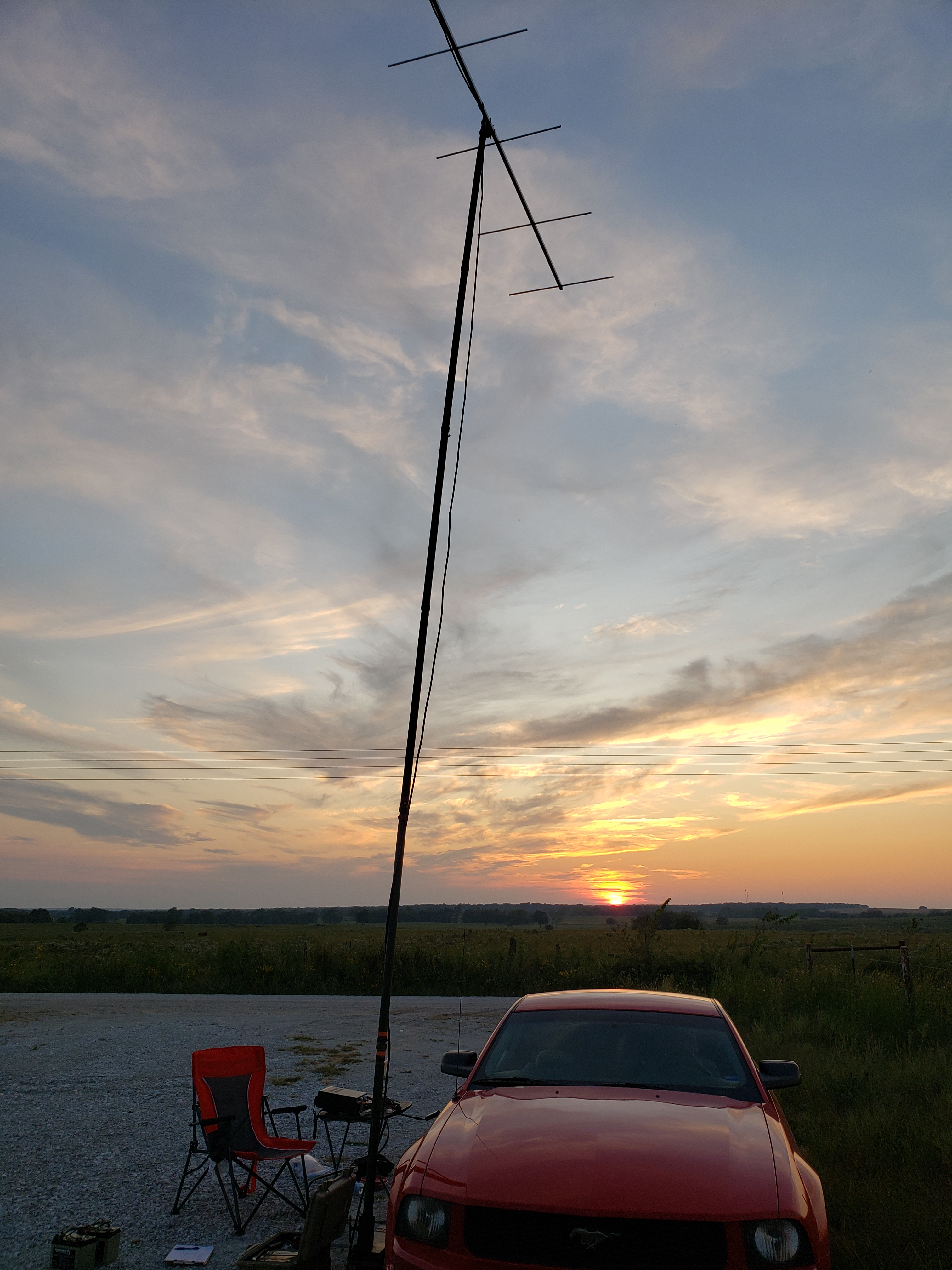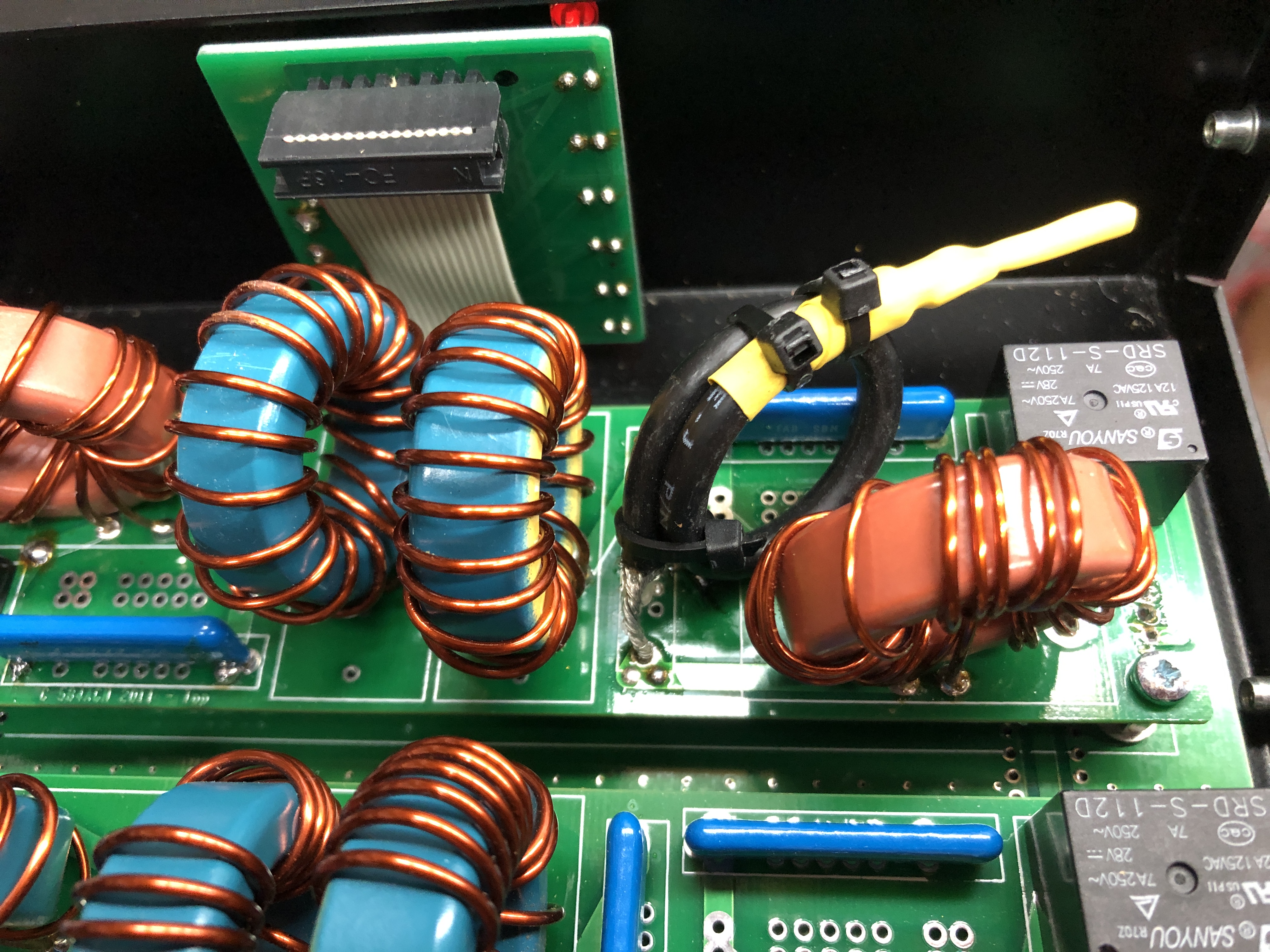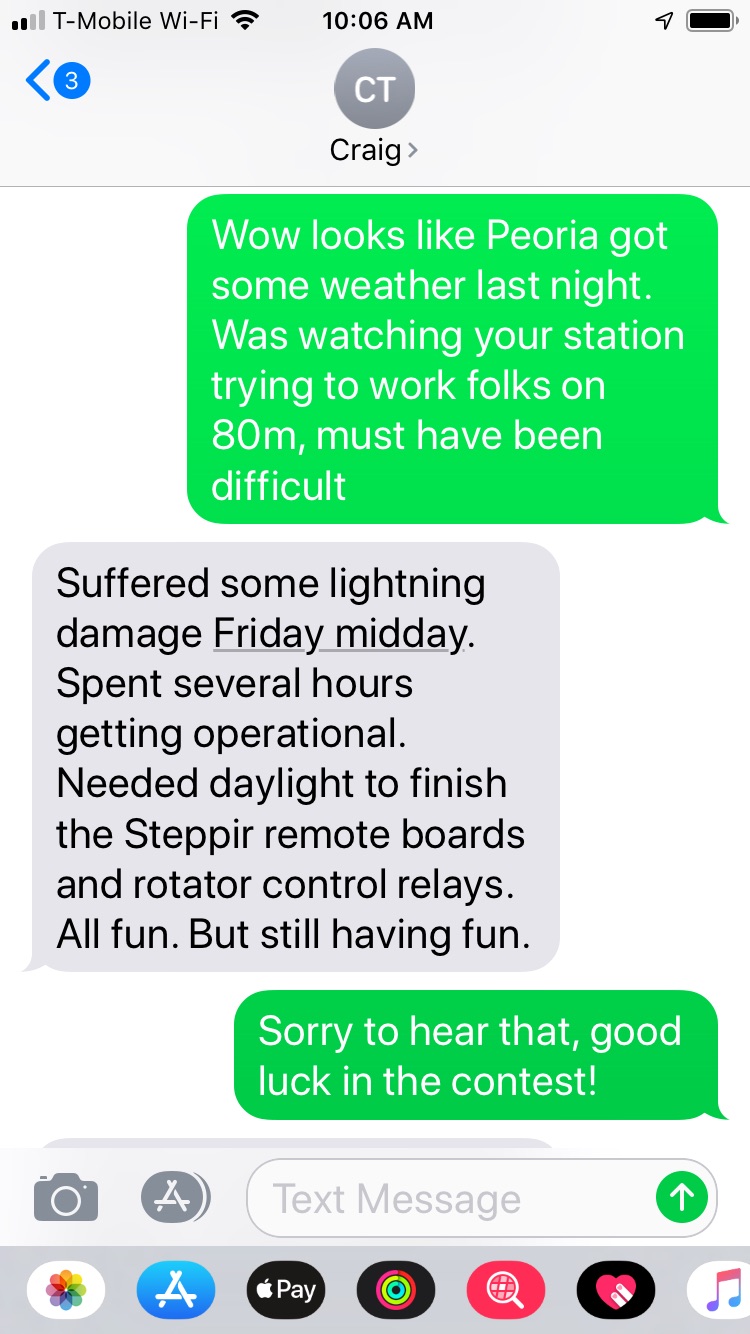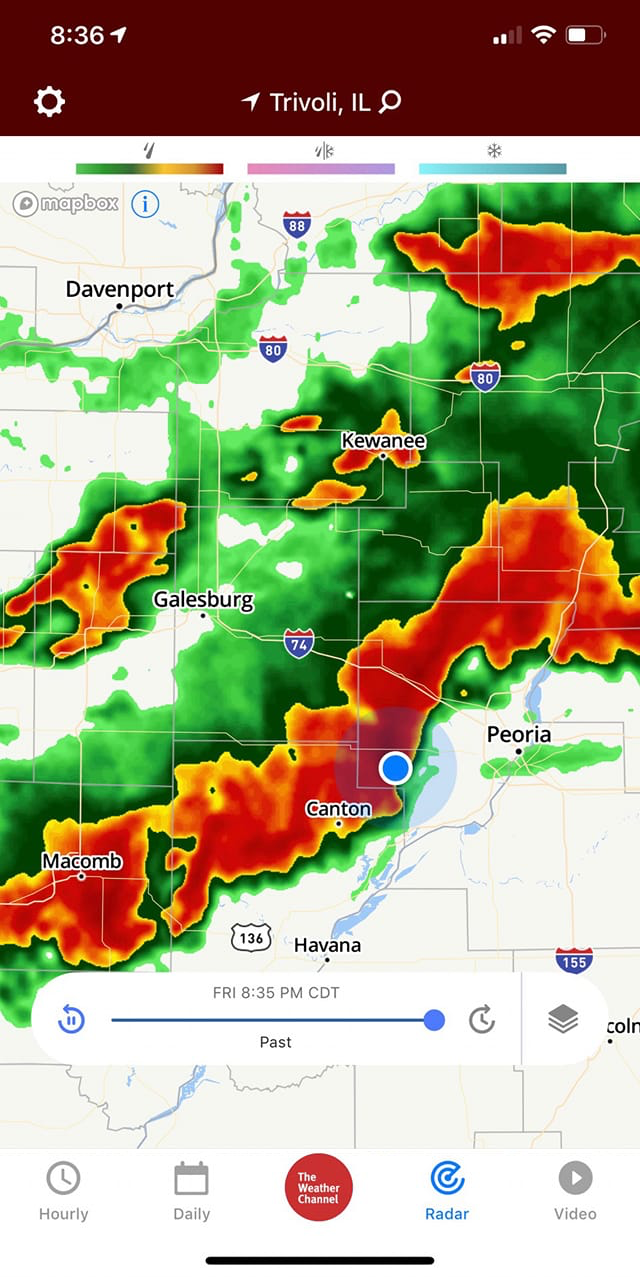 October 2, 2019 Editor: Paul Bourque, N1SFE | ||||
IN THIS ISSUE
If California were a separate DX entity with its own economy, it would rank ahead of India and behind Germany. In next weekend's California QSO Party, the activity will be extensive as out-of-California stations attempt to contact the 58 California county multipliers, and the in-state stations attempt to contact stations in the 50 states and 8 Canadian "areas." This event has special entry categories for YL, youth, and newbie contesters, and the top-20 in-state and out-of-state stations are eligible for prizes. See the rules for more information. Modes include CW and SSB, and 48 plaques will be awarded. Even if you don't participate in the event, you can still purchase a CQP T-shirt. Other state QSO parties during the 2-week period include South Dakota, Pennsylvania, Nevada, and Arizona. For DX opportunities in the next 2 weeks, try the Scandinavian Activity Contest (SAC) SSB event, or the Oceania DX SSB or CW events. Surströmming or lutefisk could be the perfect complementary contest snack food to get you into the spirit of the SAC. If you have been bitten by the RTTY bug as a consequence of the past weekend's CQ WW RTTY, the Makrothen RTTY Contest has three sessions over October 12 and 13. It's distance based, with an exchange of grid squares. In this contest, contacts on 40 meters and 80 meters get more points than higher bands - although with conditions like they are, it seems like contacts on 10 meters should get a multiplication factor as well. Complete information for all contests follows the Conversation section 3 Oct - 16 Oct 2019 October 3
October 4 October 5
October 6 October 7 October 8 October 9 October 10 October 11 October 12
October 13 October 14 October 16 According to a tweet by Scott, K0MD, the VP6 Pitcairn Island DXpedition will be participating in the upcoming CQ WW SSB Contest. DX Engineering is promoting their fiberglass mast and clamp kits for "fast deployment, easy transport, and reliable performance of temporary and portable antenna masts." There are various lengths available between 15 feet to 46 feet, which stow to either 4 or 7.5 feet. According to their website, setup is quick and easy with their cam-lock clamps. (DX Engineering via email) Over 300 stations were reporting live scores during last weekend's CQ WW RTTY. Can participation be increased by turning reporting ON by default in computer logging programs? Today's radio contesting by nature requires using your eyes to stare at computer screens for extended periods of time. Scott, K0MD, tweeted a link to a Cleveland Clinic article about how some simple techniques can help protect your vision over time. One suggestion for screen users: Look 20 feet away from your screen for 20 seconds every 20 minutes. Jeri Ellsworth, AI6TK, unveiled a new virtual reality gaming headset along with its Kickstarter campaign. As of this writing, it's already been oversubscribed. In April 2018, she demonstrated an early prototype at the Visalia International DX Convention's contest forum and discussed how this technology might change the nature of ham radio and contesting. Pultrusion Noun. The process used to make an item by "drawing resin-coated glass fibers through a heated die." Tubing and masts made this way may use different types of fiber and resins to get the desired material characteristics. The word "pultrusion" was coined between 1944 and 1952. "Pultruded" is the adjective describing an item made using the pultrusion process.
Dave, KG5CCI, took an "obligatory contest sunset picture" during his portable operation in the ARRL September VHF Contest. Dave relates: "I was taking it pretty casual this time as I had some family obligations on Sunday. I just planned go out for 8 hours on Saturday for the contest start and operate until dark. I also wanted to help out a few friends (AC0RA and N4QWZ) that were competing get some multipliers since I suspected no one else would be on from EM27. I was also testing a new antenna, and getting some real-world experience with my new IC-9700 I bought this summer. Six meters was really dead, but 2 meters was a lot of fun. I made 34 QSOs on 2, using SSB, FT8, MSK144 and even JT65 in about 8 hours of operating. Also had a couple of really nice 70 cm contacts at 370 miles and 410 miles using JT65, which is probably going to rival my personal best distance on terrestrial UHF. All in all it was a fun afternoon on VHF that didn't take too much effort, and I got a lot of good operating time in on some new gear." Though the CQ WW RTTY Contest was last weekend, you can still review the recent WWROF (World Wide Radio Operator Foundation) sponsored webinar on the CQ WW RTTY presented by Ed, W0YK. While Ed highlighted some of the rules differences, there's quite a bit of commonality between the contests. Steve, VE6WZ, has produced and shared a new receiving antenna video: "Today I uploaded a YouTube video showing my YCCC 9 circle HI-Z preamp redesign that uses a relay to ground the vertical during transmit, or when not in use.I provide a link to the Kicad PCB files that can be uploaded to your favorite PCB manufacturer if you want to build your own. I also provide a BOM parts list detailing the parts needed. Total cost per amp including the PCB board, enclosure and all parts is between $20-$30 depending on bulk component purchasing discounts. Construction and installation methods and ideas are also discussed." Tim, K9WX, writes: The Potomac Valley Radio Club (PVRC) is the winner of the 2019 NAQP Challenge. The Society of Midwest Contesters (SMC) was second and the Northern California Contest Club (NCCC) was third. The Challenge is an annual competition between NCCC, PVRC and SMC. Logs for individual club members who submit a log for any or all of the six North American QSO Parties sponsored each year by the National Contest Journal are automatically included in the NAQP Challenge scoring for their club. Scoring for the Challenge rewards both high participation and high personal scores, which means that stations of any size can contribute to the success of their club. PVRC and SMC were tied for first place after the July NAQP RTTY. PVRC narrowly won the August NAQP CW round, so both clubs were still positioned to win the overall Challenge based on their performance during the August SSB round. PVRC brought their "A" game in the SSB contest, with 153 of their members participating compared to only 112 for SMC, breaking SMC's 2-year string of Challenge victories. You can see the final results on the NAQP Challenge website. Microphone Type Still Matters Make sure your microphone matches the radio you want to use it with! This might matter more in a portable operation like ARRL Field Day where people may bring their own headsets. I almost goofed during a recent contest when we had two different brands of radios for two stations in the Washington Salmon Run. One brand exclusively uses electret-type microphone elements, while the other brand can use either dynamic or electret microphone elements with a menu change. I only had one headset with an electret element, and ops who brought their own headsets had to be mindful of whether it would work with the radio they were using. Bob, KB6NU, blogged about NXP Semiconductor's Homebrew RF Design Challenge for their MRF-101 and MRF-300 transistors, and how it attracted his attention on Reddit (I mentioned this contest a number of weeks ago in the Contest Update, BTW). Bob points to a design by Jim, WA2EUJ that uses the MRF-101 and a CPU cooler for a 2" x 2" 1.8-50 MHz RF amplifier. Bob's video is informative and entertaining.
Jeff, AC0C, had a bad capacitor in the 15 meter filter section of his 5B4AGN multiband bandpass filter, because as he puts it, "they have been treated terribly over the years." One way to damage a filter is to use power levels at the limit of the filter into a load that presents a high SWR. Especially a high-duty mode like RTTY. He didn't have the required small 14 pF capacitor, so he trimmed a piece of RG-58 to the required value - coaxial cable exhibits a certain amount of capacitance per unit length. "The repaired 15m filter runs 1.10:1 or better SWR across the band with an insertion loss of about 0.65 dB." He advises the following if to those who may find themselves in need of doing this same kind of fix: The RG-58 "can be coiled up and secured with some tie wraps." Keep it away from the toroid to minimize interaction as best you can - "a half inch is probably enough to minimize trouble." Jeff uses a L/C meter to measure the capacitance as the piece of cable is trimmed to approach the target value, and he leaves the cable about 1/4" long, then trims the braid back to increase the distance between it and the center conductor. He puts shrink wrap over the end, and measures the passband of the filter section with the chassis cover in place. On the QRP-L mailing list there was a discussion of power measurement devices suitable for UHF frequencies. Chuck, W5USJ, suggested the website of OK2KKW, the Czech VHF/UHF Ham Radio Contest Club, for directional couplers suitable for VHF and UHF operation. OK1VPZ, author of the article, discusses the types of printed circuit boards necessary at UHF. Hans, G0UPL, creator of the QCX Transceiver and proprietor of QRP Labs, suggests to those who need to do Transmit/Receive switching to properly use PIN diodes, and suggests studying the website of Don, W6JL. According to Hans, the benefits of PIN diode switching include being "faster, smaller, lighter, and less expensive than relays (e.g. 1N4007 costs a few cents and is good to 100 W), and there's nothing to mechanically wear out. Better isolation than all but coaxial or RF-specified relays." (via QRP-L) The Leeches Were Nervous After speaking at the Society of Midwestern Contesters annual event back in August, I stopped by Craig's, K9CT, station location outside of Peoria, Illinois. I grew up in Peoria, but hadn't been in the area in many years. His country neighbors grow corn and other cash crops, while he grows towers and wires. You can read about his extensive tower system, transmitting arrays, and receiving antennas on his website, but it's even more impressive to see them! From my location in the Pacific Northwest, Craig always puts in an excellent signal and has superb receiving capabilities -- I know if I can hear him, he can hear me. Which made last Friday's CQ WW RTTY 80 meter experience puzzling. The K9CT beacon-like signal was calling CQ on 80 meters, and our multi-op called him. He replied to someone else. We waited, and when he was done, we called him again. He responded by calling CQ. That was odd. Odd enough that it was worth discussing among our ops during the contest. Did we have a problem with our transmissions? A check of our spots and RBN seemed to indicate we did not. We called another station in the eastern US, and worked them no problem. We went back to K9CT, and after a few tries, finally were able to get a contact in the log. Thinking about this, I recalled that during my visit last month, Craig talked about how when thunderstorms were overhead they sometimes were accompanied by an intense buzzing that made conditions extra challenging. "Maybe they're having a storm," I commented to the team. I didn't think too much more about it but the next day while checking Facebook, I read that some friends from high school still living in Peoria were commenting on how they were having flooding in their basements. THAT was unusual. I checked the local Peoria paper - The Peoria Journal Star. Front page news: A series of storms had swept through Central Illinois on Friday, dumping up to seven inches of rain in some places, spawning funnel clouds, lots of lightning... and there were pictures of flooding in places I'd never seen have that problem. So I texted Craig:
Craig posted a screenshot from his phone on Facebook, showing the line of storms:
Even with today's weather radar, satellites, remote sensing, and so on, the localized heavy flooding might not have been predictable. But we have come a long way since the "tempest prognosticators" of the 1800s, which used leeches to help predict the weather by triggering bells with small levers made out of bone. The situation inside K9CT during the contest? Serenity and QSOs:
That's all for this time. Remember to send contesting related stories, book reviews, tips, techniques, press releases, errata, schematics, club information, pictures, stories, blog links, and predictions to contest-update@arrl.org 73, Brian N9ADG 3 Oct - 16 Oct 2019 An expanded, downloadable version of QST's Contest Corral is available as a PDF. Check the sponsors' website for information on operating time restrictions and other instructions. HF CONTESTS CWops Mini-CWT Test, Oct 2, 1300z to Oct 2, 1400z and, Oct 2, 1900z to Oct 2, 2000z and, Oct 3, 0300z to Oct 3, 0400z; CW; Bands: 160, 80, 40, 20, 15, 10m; Member: Name + Member No., non-Member: Name + (state/province/country); Logs due: October 5. 10-10 Int. 10-10 Day Sprint, Oct 10, 0001z to Oct 10, 2359z; All; Bands: 10m Only; 10-10 Member: Name + 10-10 number + (state/province/country), Non-Member: Name + 0 + (state/province/country); Logs due: October 18.
4 States QRP Group Second Sunday Sprint, Oct 14, 0000z to Oct 14, 0200z; CW, SSB; Bands: 160, 80, 40, 20, 15, 10m; Member: RS(T) + (State/Province/Country) + Member No., Non-member: RS(T) + (State/Province/Country) + Power; Logs due: October 16. VHF+ CONTESTS IARU Region 1 UHF/Microwaves Contest, Oct 5, 1400z to Oct 6, 1400z; All; Bands: 435 MHz, 1.3 GHz, 2.4 GHz, 3.4 GHz, 5.7 GHz, 10 GHz, Millimetre; RS(T) + QSO No. + 6-character grid square; Logs due: October 14. Microwave Fall Sprint, Oct 12, 0800z to Oct 12, 1400z; not specified; Bands: 902 MHz and above; 6-character grid square; Logs due: October 26. Also, see SKCC Sprint Europe, Pennsylvania QSO Party, Arizona QSO Party, SKCC Weekend Sprintathon, Nevada QSO Party, SKCC Sprint Europe above. 3 Oct - 16 Oct 2019 October 3, 2019 October 4, 2019 October 5, 2019 October 6, 2019 October 7, 2019 October 8, 2019 October 9, 2019 October 10, 2019 October 11, 2019 October 12, 2019 October 13, 2019 October 14, 2019 October 15, 2019 October 16, 2019 ARRL Information Click here to advertise in this newsletter, space subject to availability. Your One-Stop Resource for Amateur Radio News and Information ARRL membership includes QST, Amateur Radio's most popular and informative journal, delivered to your mailbox each month. Subscribe to NCJ - the National Contest Journal. Published bimonthly, features articles by top contesters, letters, hints, statistics, scores, NA Sprint and QSO Parties. Subscribe to QEX - A Forum for Communications Experimenters. Published bimonthly, features technical articles, construction projects, columns and other items of interest to radio amateurs and communications professionals. Free of charge to ARRL members: Subscribe to The ARRL Letter (weekly digest of news and information), the ARES E-Letter (monthly public service and emergency communications news), Division and Section news -- and much more! ARRL offers a wide array of products to enhance your enjoyment of Amateur Radio. Visit the site often for new publications, specials and sales. Donate to the fund of your choice -- support programs not funded by member dues! Reprint permission can be obtained by sending email to permission@arrl.org with a description of the material and the reprint publication. ACKNOWLEDGMENTS ARRL Contest Update wishes to acknowledge information from WA7BNM's Contest Calendar and SM3CER's Contest Calendar. | ||||











